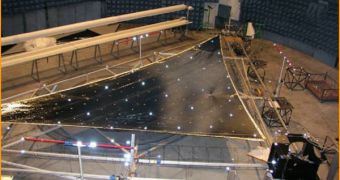Space agencies around the world are currently desperately seeking solutions to the crisis in orbit, where numerous spent satellites and first stages from rockets, together with micro asteroids and other orbital debris are posing an immense risk to ongoing missions. While the United States and Europe would rather move for more observing capabilities, and want to implement tracking devices, others are considering a more direct approach. That is to say, engineers have devised a cunning plan to help minimize the amounts of debris in orbit, namely the creation of sails.
These so-called sails would be nothing more than very light, very thin, and very strong sheets of material, which would be deployed behind a spent satellite, or maybe even delivery system component, to increase the drag the craft experiences in the upper atmosphere. The system could work for technologies deployed to heights of up to 750 kilometers (470 miles), where residual air molecules still exist. The idea is to make the craft more prone to friction, as this has the potential to significantly alter its orbit over short periods of time.
At this point, spent satellites and first stages are flying around in a slowly decaying orbit, which means that they will eventually fall to Earth, but that many decades will pass until that happens. Conversely, by using a sail, the atmospheric reentry could occur within a day or two, maybe even faster, of the deployment. As the craft slowly begins to leave a stable orbit, it will start experiencing more and more drag, as it hits increased amounts of oxygen molecules. At one point, the friction will increase to such levels, that the entire ensemble will catch fire and disintegrate in the upper atmosphere.
“It is an interesting solution, especially for the satellite that has no propulsion system at the end of its life. The principle of aerobraking is to increase the surface over mass ratio of an orbital object, to accelerate the fall-out by increasing the drag on the system. To do that, we need to deploy a very light structure. That's why we chose to use 'gossamer structures.' These are composed of booms and very thin membranes,” Brice Santerre, who is an expert at the European-based EADS Astrium space company, told the BBC News. Together with colleague Max Cerf, Santerre created the Innovative DEorbiting Aerobrake System (IDEAS).

 14 DAY TRIAL //
14 DAY TRIAL //